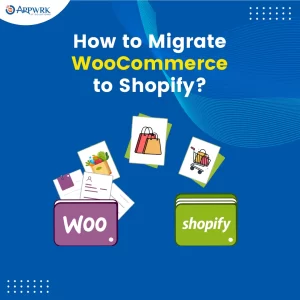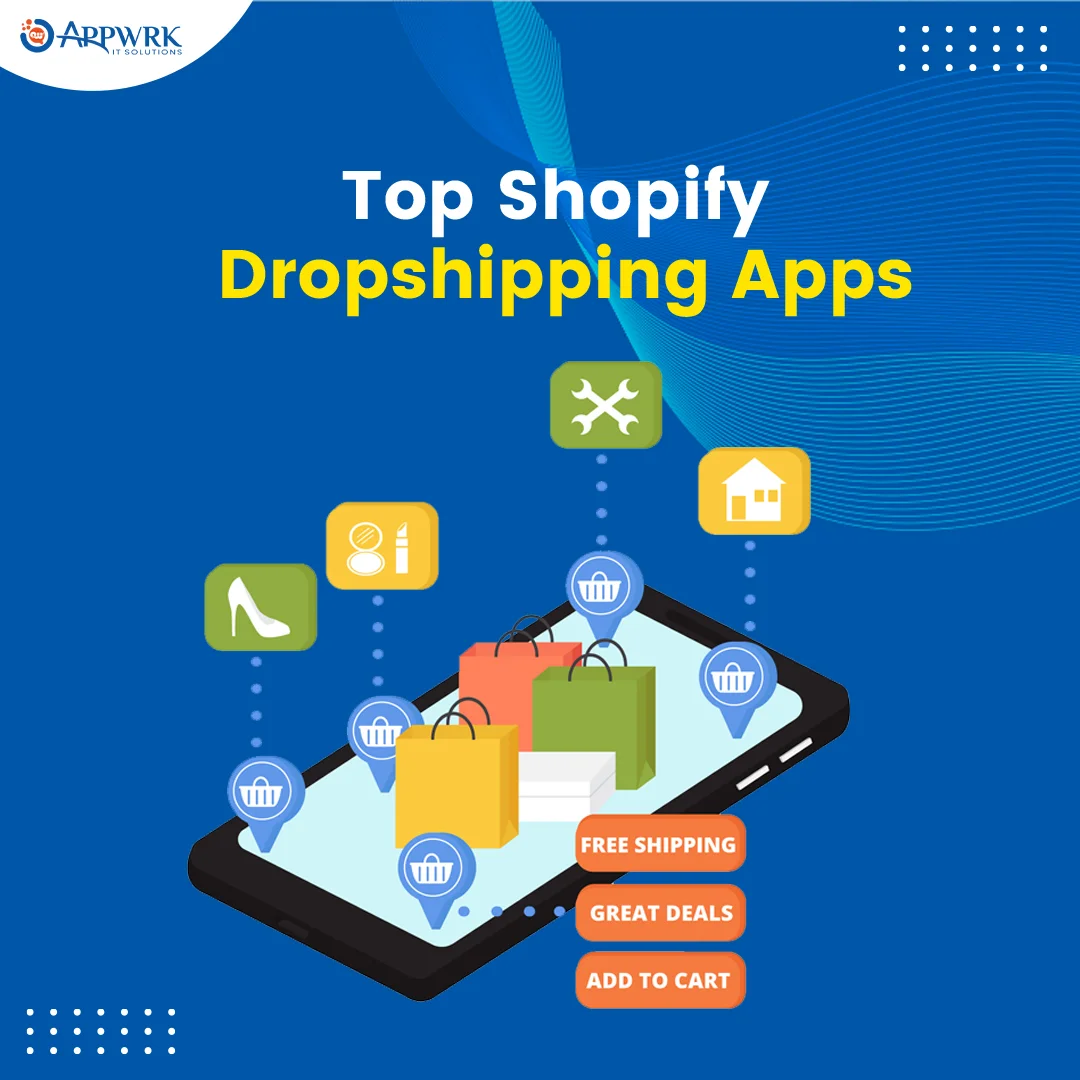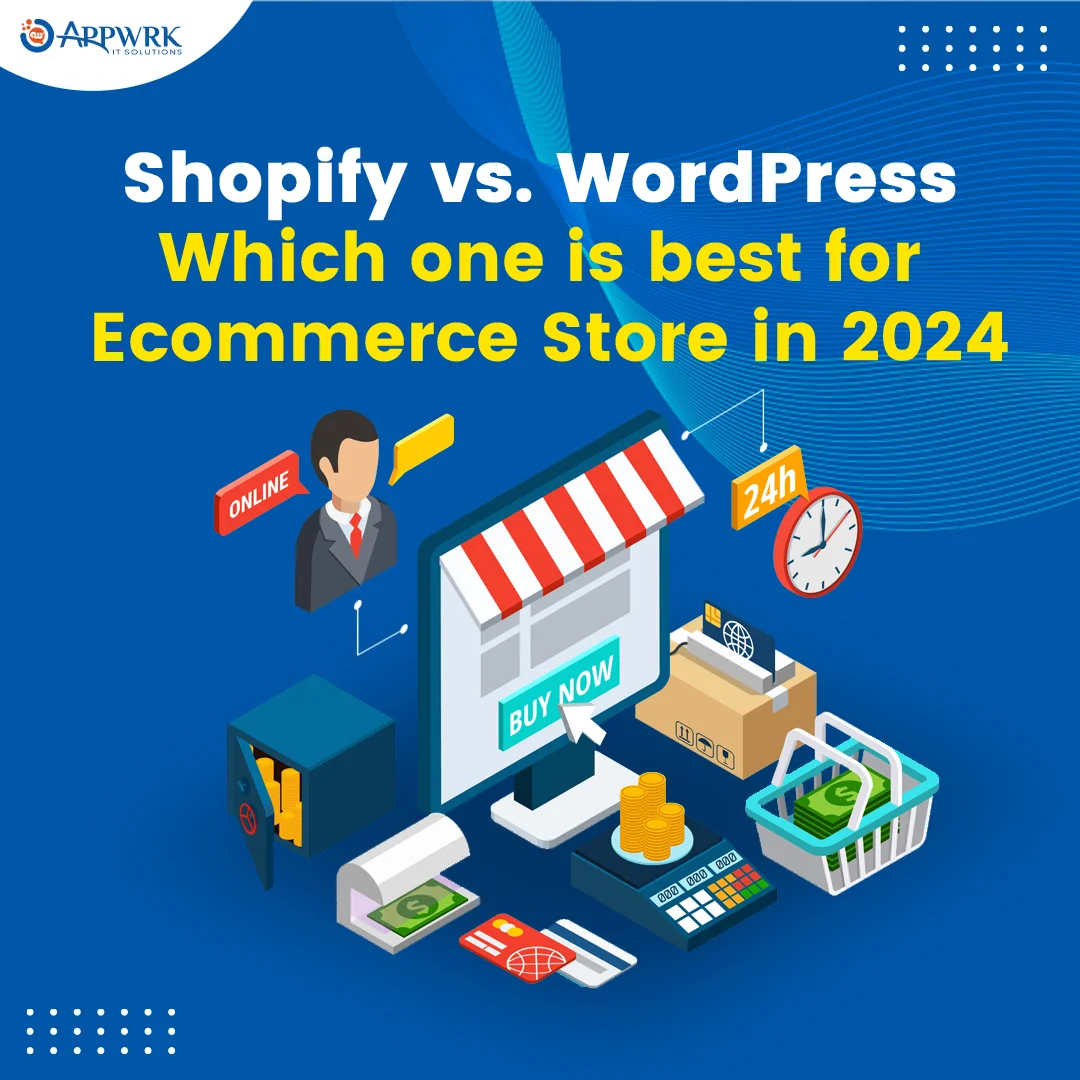Migrate WooCommerce to Shopify in 2025
While Shopify’s theme is to help businesses focus on running their businesses, not their websites, and migrate WooCommerce to Shopify, the all-in-one commerce solution looks excellent for small and medium-sized enterprises due to the features and functionalities supported by Shopify. While Shopify Plus and Enterprise favor large companies more, Shopify is not meant for huge businesses due to the high transaction fees and commissions involved per transaction.
However, since the maximum percentage of the companies fall in the category of business supported by Shopify, Shopify can be found more popular on Google Trends than WooCommerce. Migrating to Shopify from WooCommerce is an ideal hands-on way to learn. The blog post clarifies how to migrate WooCommerce to Shopify with limited paid app usage manually. It further explains the two best app services for such migration and briefs that the same can be performed through a certified web developer as well.
While manual migration of WooCommerce to Shopify can be free of cost with requirements of a few extra dollars, the other options can be expensive. Migration through CSV export/import is an option that is the cheapest with limited paid app requirements and explains all the nitty gritty involved, and that is why we are covering it here, with added sections on other options available. Not only will the below steps grill you to get you ready for migration, but you will also learn in parallel how to perform migration through other means.
Without an adieu, let’s get started!
Table of contents
- Steps to follow while migrating Woocommerce to Shopify:
- Sort out how to migrate your WooCommerce store’s content and data to Shopify
- How to Export product data from WooCommerce
- Edit the exported product data
- Commit the Import of your product data to Shopify
- Verification and organization of your products once import is completed
- Verify to ensure products are organized
- Exporting customer data from WooCommerce (Optional)
- Editing customer data from WooCommerce (Optional)
- Importing your customer data to Shopify (Optional)
- Import your reviews to Shopify (Optional)
- Exporting your order history from WooCommerce (Optional)
- Importing your order history to Shopify (Optional)
- Improving the design of your website to make it look great
- Add from admin a free theme
- Shipping module Set up
- Taxes based configuration
- Payment provider setup
- Placing some test orders
- Addition of staff to your store
- Setting up your domain
- Some Other Woocommerce to Shopify Migration Services
- Hiring A Certified Web Developer is the last option
- Conclusion
- FAQs: WooCommerce to Shopify
Steps to follow while migrating Woocommerce to Shopify:
First, you must create a Shopify store to migrate woocommerce to Shopify. Then, select the plan that best suits you and follow the below steps to complete the migration.
Sort out how to migrate your WooCommerce store’s content and data to Shopify
Once you have created your store on Shopify, you will need to review the existing Woocommerce store and finalize what content and data should be moved. The following needs to be migrated: Products, Customers, Details of orders processed in the past, All reviews
Once you have finalized, you need to finalize how to transfer each type of content. The options are the following:
- You can opt for manual data copy-paste
- You can opt for CSV import, where you export the data into the CSV files and then import them to your new Shopify store. However, some of the data cannot be migrated this way.
- Third-party migration apps
- You can also select the third-party migration apps from the Shopify App Store,
- You can also opt for a Migration expert to manage and complete the migration.
The remaining section of the guide explains the CSV files method when CSV files are available and notes other options when that is not available.
How to Export product data from WooCommerce
You can export WooCommerce products to Shopify. From the Woocommerce account, move to All Products>Products. Click the Export option. The dialog box appears. Select the columns you desire to export. Similarly, select the products. Further, select the product categories. If you want to export all custom meta, click on Yes, export all custom meta. Finally, click on the Generate CSV button. Give a Name to the CSV file, and click over the Save button to save it to your Desktop or whatever device you are operating on.
Edit the exported product data
You must also clean the exported file before uploading it to Shopify to migrate products from Woocommerce to Shopify.
The product CSV template you must consider for cleaning or, in simple terms, restructuring can be downloaded online. You can copy the template in the new tab of the CSV file. You can copy and paste the column headers over there and then copy and paste the Woocommerce import data into the Shopify product CSV template before you start the import from your store.
You are required to review the following while using the Sample Data:
You will see an example product and a couple of variants in the sample file. Your import file might contain additional products and variants. Remove those examples if you leverage such a file to create your import file.
You will find a Variant Inventory Qty column applicable for stores with one location; if you use multiple locations and require the import or export of inventory quantities, use the inventory CSV file.
The sample file shows Price/International and Compare At Price/International products when you sell internationally. However, both are blank due to the need for unique pricing requirements for these products when you sell internationally. You can learn more about the Shopify Markets CSV columns online.
Review the table below for the columns that map from the Woocommerce import file data type with Shopify’s data type. You are required to remove the columns that are not mentioned from the import file. Some columns are in Shopify product CSV, which are not in Woocommerce product export. While these are not listed, you are required to review them. Explore each column needed in the product CSV file, available online. The WooCommerce data type to Shopify data type mapping is as below, and you are required to make the changes accordingly:
- Name to Title
- Description to Body (HTML)
- Attribute 1 name to Option1 Name
- Attribute 1 value(s) to Option1 Value
- Attribute 2 names to Option2 Name
- Attribute 2 value(s) to Option2 Value
- SKU to Variant SKU
- Weight (lbs) to Variant Grams
- Stock to Variant Inventory Qty
- Regular Price to Variant Price
- Images to Image Src
Commit the Import of your product data to Shopify
Once you have the CSV file ready and have done all the required edits, you can import your products from Woocommerce to Shopify for Woocommerce to Shopify migration.
Follow the following steps. In the Shopify admin, find the Products option. Tap on import. Tap further on the Add file and select the CSV file you have prepared. Once you have selected the CSV file you prepared, you must publish new products to all sales channels.
Further, click on Upload and examine the preview. Please review the details related to the import and click on Import products. Once your file is uploaded, Shopify will forward a confirmation email to the email you mentioned while setting up the Shopify store. You can find some common issues and general details about the CSV file online.
Verification and organization of your products once import is completed
After you have imported the products to Shopify, check that all details are correctly imported. Details like price, inventory, and weight can considerably impact the business if imported incorrectly.
You require reviewing for common errors that can occur during an import. Issues can be like:
- Something changed, though the product was successful
If any information has been altered, you will see a message in the product review section of the import summary. You must select view items to make any needed changes.
- The product still needs to be published, though it was imported successfully.
The product might be marked hidden, and in such cases, they did not get published unless you ensure they are available to your sales channels,
- Some information needs to be included in the imported products.
You are required to check the product page and fill in the missing information.
- Not able to import the Product variants
If there is no variant option, the product will not be imported. You can add the product manually to your Shopify store.
- Not able to import some clients or orders
If multiple customers with identical email addresses or phone numbers are imported, the most recent customer entry with duplicate data will be imported. You can enter the old customer credentials manually.
Verify to ensure products are organized
Note: If you sell digital services or products, you must review how to sell them on Shopify.
- Verify your product credentials like images, descriptions, price, variants, and meta descriptions.
- Now, create the product collections to categorize the products. These collections will group the products in the Shopify admin and external websites.
- Try to dive deep into product inventory and transfers so that you can track your business’s inventories. Review the available inventory apps to determine whether they are essential for your business.
Exporting customer data from WooCommerce (Optional)
It is possible to export the customer data from WooCommerce.
Before you start, you must install a plugin in the Woocommerce store: import Export Suite.
After installing the plugin, follow the following steps. Inside the Woocommerce account, move to import Export Suite. Tap on Export. A dialog box will appear. Select User/Customer from the drop-down menu, and click Step 2: Choose an export method.
For the dialog box that is shown next, perform the below steps:
- Choose a method for Export.
- Pick which hidden field should be included.
- Click Step 3: Advanced options/Batch export/Scheduling.
For the following dialog box, complete the below steps:
- For exporting guest users, pick Yes. Or else, pick No.
- Name the export file with a name.
- Choose the export format CSV, and then select the Delimeter. These are required to differentiate the raw data elements.
- Now tap on Export.
Editing customer data from WooCommerce (Optional)
You can only import the CSV into Shopify by editing it. Download and view the customer CSV template available online, and then edit your CSV file to match the CSV format. You can work on the other tab of the CSV file. In the other tab, copy the column headers and paste the Woocommerce import data from the Shopify Customer CSV template. Ensure the CSV has only the Shopify customer CSV templated data from your store before importing it.
Note: You cannot import customer CSVs that do not match the Shopify headings. Also, you will need help finding data mapping support for customer CSV imports.
Now check the export for the columns that map to the Shopify data type. Some of the columns will not match; you need to edit accordingly. The columns required for the customer CSV file are in the table below.
- First_name to First Name
- Last_name to Last Name
- User_email to Email
- Billing_company to Default Address Company
- Billing_address_1 to Default Address Address1
- Billing_address_2 to Default Address Address2
- Billing_city to Default Address City
- Billing_state to Default Address Province Code
- Billing_country to Default Address Country Code
- Billing_postcode to Default Address Zip
Importing your customer data to Shopify (Optional)
Once you have the CSV file, you can complete all the necessary edits and import the Wooocommerce customers to Shopify. From inside the Shopify admin, move to Customers. Now Tap in Import. Tap on Add file, and finally, choose your CSV file. Tap on the Import Customers. Review the details related to the import, and finally, click on the import customers. Further, review the customer import summary and tap on View, all customers.
Import your reviews to Shopify (Optional)
You cannot export or migrate the reviews to Shopify from Woocommerce. However, you can import the reviews manually with the help of third-party apps available on the Shopify App Store, such as Judge.me, Loox, and Yotpo.
Exporting your order history from WooCommerce (Optional)
You can export the order history from Woocommerce. Actually, you will end up on Woocommerce download orders as CSV.
Before you start, you must install a plugin in your Woocommerce store. The plugin is Import Export Suite for WooCommerce. For the Woocommerce account, move to import Export Suite. Tap on Export. Choose the Orders for the post type, and tap Step 2: Choose an export method.
In the dialog box that appears, perform as below:
- Choose an export method.
- Find which hidden fields you require to include,
- Click Step 3: Advanced options/Batch export/Scheduling.
Optional: In case you decide to move to Step 3, then do as below:
- For exporting guest users, choose Yes, Or otherwise select No,
- Give a name to the export file.
- Select the export format CSV, then select the Delimiter, which is required to differentiate the raw data element.
- Now tap on Export.
Importing your order history to Shopify (Optional)
Use third-party migration apps, which you can see on the Shopify App Store, to migrate the order history from Woocommerce to Shopify. The below apps can be helpful for importing the order history:
- Ablestar Woocommerce importer
- LitExtension Store Migration
- Matrixify
Thus, you can migrate orders from woocommerce to Shopify by exporting and importing order history.
Improving the design of your website to make it look great
To get you started, the admin theme page has a default theme set up as you open the Shopify account. You can customize the theme to make the website look as you want. If you want to customize a different theme, you can add it through admin.
For adding, select the below options:
- Add a free theme, which you can find inside the admin.
- You can buy a paid theme,
Add from admin a free theme
Shopify develops various free themes. The steps are as follows:
Desktop:
- From the Shopify admin, move to online store> Themes.
- You will find a popular free themes section at the bottom of the page now. Select any theme, review its features, and preview the available theme styles.
- Do further as below:
- If you find a theme on the page that you like, click Add Next to that theme. The theme will be added to your admin’s theme page.
- If you want to review, click on the Theme Store and then follow the below steps to add the theme from the theme store
Add a theme from the Theme Store
Third-party designers create the paid themes. You can customize them. Visit the Shopify store and select a theme. If you are in the free trial period, select a free theme to avoid paying any charges. If you select the free theme, click Add Theme or begin with this theme. If you choose the paid theme, tap on Buy to purchase it, but try before buying it. For the paid ones, tap on approve to approve the payment. The theme will get added to the admin’s theme page.
Select a paid theme from the store
You can preview the paid themes and customize them through the theme editor. If you buy the themes, any changes will be saved. Now, visit the theme store and select a paid theme. Now tap on try theme. The preview will load.
Do as below:
- To stop the preview, click close preview.
- For purchasing, click Buy,
- To modify using the theme editor, tap on the Customize theme button.
If you do not buy the paid app, it will still show up on the theme page, and they have a theme trial label.
Shipping module Set up
You must provide the shipping rates and methods before the store launch.
If you only sell digital products or services, you must deactivate the shipping option, as customers will not receive the physical goods. To get the correct shipping rates based on location, you first need the store’s address. Mention all the locations from where you ship the products. Now, these shipping zones allow shipping to various regions, states, and countries. If you use carrier-calculated shipping rates, you must configure the shipping dimensions. Many carriers calculate the shipping rates using volumetric weights like height, weight, and package depth. Now, mention the shipping rates for various shipping zones. Also, select a shipping strategy suitable for your business. It can be helpful to look through some of the options that meet your requirements before you make the final decision. Now, decide how you would like to fulfill the orders. You can fulfill and ship them yourself or use a shipping service that can ship them on your behalf.
Taxes based configuration
You are required to charge sales tax to run your business safely. Different regulations and rules regarding the sales tax based on location will apply to your products. To make sure that your store complies with such laws, take time to set up the Shopify tax setup process.
Note:
If you deal in Europe, then various other regulations will apply.
While setting up shipping, you can set up shipping taxes for the products based on customers’ regional tax regulations, which you can find through their province and state. And Shopify automatically calculates these.
If you require adjusting the tax manually, based on the region, with some specific tax restrictions based on product type, you can use the tax override option.
How to keep track of the taxes
When configuring tax settings for the product, you are required to consider how you can keep it on track throughout the entire year.
If you are unsure, you can use some accounting apps that you can find on the Shopify app store.
Payment provider setup
To ensure that customers can make payments, set up a payment provider that helps you accept credit card payments. You can use Shopify’s own payment system with reduced transaction fees, but make sure it is available in your country. You can also use third-party payment methods.
Note: If you use Shopify payments, you can avoid third-party transaction fees and check your payments right from within the Shopify admins.
Setting up the payment provider
- Select the payment provider that is available from Shopify or the third party.
- You can activate Shopify payments or any from a third party through Shopify’s admin.
- Now select how to register and authorize payments as custom buys from your store.
- After you pick the payment providers, you must configure the checkout page to process customer orders.
Setting up the checkout
- Set up the fulfillment of orders and payment authorization.
- Mention your store’s policy so customers can see them before completing the checkouts.
- Now, edit the checkout customer information settings and decide when you want to save the email addresses to update them about promotions and events.
Placing some test orders
You can place test orders to check different types of transactions, such as accomplishing a failed or successful transaction, fulfilling or partially fulfilling the orders, archiving successful order details, refunding an order, and canceling an order. As you make, fulfill, or refund an order, you will see the emails the customers get with each action. The templates are editable from the notification page, which you can find in the Shopify admin.
Addition of staff to your store
You can assign each staff member personal login credentials and set up permissions for each. Moreover, while setting up the Shopify store, you can purchase a new domain or transfer your domain from the existing store to the new Shopify account.
Note:
To prepare for the store migration, you might have to disconnect existing domains that you want to transfer from your existing store. If you don’t do this, you can encounter SSL certificate-related errors.
Setting up your domain
Get a new domain
You can purchase the domain from Shopify. Buy a new domain via Shopify. Now set up the new domain as your primary, and that domain will be displayed in the browser, in search results, and on social media. You can set up email forwarding so that customer messages forwarded to the custom domain email IDs are redirected to your personal email IDs.
Connecting and transferring an existing domain to Shopify
If you have an existing domain, you must follow the steps below so that your domain points to your new Store.
You can pick the existing domain, though the Shopify link structure for each page will differ from your previous service, which means the old links to a specific page won’t load for the customers. If you want to avoid your customers landing on the error page, set up URL redirects before you transfer your domain for the pages that your customers bookmark, as well as links from third-party sources. Thus, when they go to the old link, they will be redirected to the new one, not the error page.
Setting up SEO for the success of your Store
You can set up the Shopify store for SEO so that you maintain the rankings.
Setting up redirects
You can install redirects for each critical page to help preserve the SEO rankings. Once your store is live, you might like to review which pages on your site register maximum traffic and ensure that those pages redirect to the Shopify store. You can also use the CSV file to import the redirects. Tap on Settings> Apps and sales channel from inside the admin section. From the page you see, Tap on Online Store. Click now on the Open Sales channel. Once on the Open sales channel page, you must click navigation—further, the Click View URL redirects. Click on Create URL redirect. Enter the old URL in the redirect from where you want to redirect the visitors. In the redirect to field, enter the new URL you want to show the visitor. If you require redirecting to your store’s home page, mention /. Now click save redirect.
Once you save the redirects, type the original URLs in the web browser and check if they are redirected to the new URL. You must check all pages.
Editing the meta description
In Shopify, you can set meta descriptions for web pages, collection pages, product pages, and blog posts. Ensure all the pages have a unique meta description using direct and plain language; if you add a good meta description, people will be encouraged to click these links.
You can do this in various areas, such as setting the title and description for your store, editing the product display on search engines, editing the search engine listings for your blogs, and editing the search engine listings for the other pages.
Verification and submission of the sitemap to Google
Note
Sitemaps can be submitted anytime, though search engines will not be able to access them if your website is protected by a password. If you require removing the password page, you can find out how to remove the online store password online.
Each Shopify store will automatically generate the sitemap.xml file, which contains links to your products, collections, blog posts, and primary product images. This search engine uses this file to index your site so that your store pages are displayed on the search engine. Submitting the sitemap files to the Google search console will help Google to sort out and index pages of your site,
You can find sitemap URLs at the root directory of your store’s domain, like shoppingonline.com/sitemap.xml.
The generated sitemap files. Links to different sitemaps of your credentials, like blogs and products. They are automatically updated when you add a new product webpage, collection, images, or blog posts to your Shopify store.
The process of indexing and crawling for the site will take time, and Google doesn’t guarantee the time it will take.
Once your site is launched, Google can take from a few days to a few weeks to index your site. For checking the status, search Google for checking your index status by typing site: followed by your domain on the Google search bar like site:appswrk.com
You can learn more online.
Making use of an app for SEO
An SEO app can optimize images, boost loading speed, and check broken links. The Shopify App Store has many SEO apps.
Some Other Woocommerce to Shopify Migration Services
While there are loads of free and paid Woocommmerce to Shopify Migration services available online, the two top apps we suggest you use are the Cart2Cart and LitExtension apps. The ratings for Cart2Cart based on Capterra are 4.6 out of 5 from 67 reviews, and the Litextension rating is 4.9 out of 5 from 6 reviews. While you can use Cart2Cart and LitExtension for free for small migrations like 10 products in the case of Cart2Cart and 20 entities in the case of LitExtension, you will end up paying around $2500 for a migration involving 10,000 products, 5 million users, and 1000 orders for Cart2Cart. You can surf through their online site to estimate the budget required based on your requirements.Cart2Cart offers a pay-per-entity model of payment, where you pay based on several entities migrated. They also provide Migration Preview services, through which you can check how your migration would look before making payment.
Moreover, While LitExtension requires you to contact customer support for a quote for such a large requirement, you will end up paying $449 for a requirement like 100 products, 500 customers, and 1000 orders, which can help you estimate the budget required for your estimates. Also, they offer an Unlimited offer that can cost you around $599 for any level of migration. While we suggest you consult their customer support for pricing, we would mention that Cart2Cart is cheaper than Litextension for smaller migrations, even when they provide discounts on more extensive migrations. Litextension is more inexpensive for larger Woocommerce to Shopify migration. Thus, our best pick for small to medium migration is Cart2Cart, and for more significant migration, LitExtension grabs the best app tag in our list. Both apps offer a 30-day money-back guarantee in case of any significant technical issue due to the migration.
Hiring A Certified Web Developer is the last option
While the CSV method should be your choice if you are technically sound and have enough time and energy, app services are the right choice if you lack technicality and time and have a large migration requirement. If you are still unsure, you can hire a certified web developer to migrate Woocommerce to Shopify and pay them a fixed price or an hourly rate. Also, while you can employ them independently, services like Cart2Cart offer migration expert services at affordable rates.
Conclusion
In summary, migrating from WooCommerce to Shopify offers businesses a streamlined path to a robust e-commerce platform. With various migration methods available, from manual to automated solutions like Cart2Cart and LitExtension, businesses can tailor the process to their needs. APPWRK can also provide expert guidance and support throughout the migration journey, ensuring a smooth transition. By following the outlined steps, including data migration, design enhancements, and setting up essential features like shipping and payments, businesses can seamlessly transition to Shopify and unlock its full potential for growth and success. Ready to migrate? Contact us today for personalized assistance and make your transition to Shopify a breeze!
FAQs: WooCommerce to Shopify
You can, but other more accessible and time-saving options are also available.
Yes, you can do that.
Yes, you can import customer data, though this step is optional.
Yes, the SEO rankings can be affected. As we explained in step 19, take the necessary steps.
You can place orders to test whether your store is functioning as previously, as explained in step 16.
It is not mandatory, but you can do so if you want, as explained in step 12.
Yes, the Shopify App Store lists several free migration apps, like Cart2Cart and LitExtension, that you can use for this purpose. However, they will cost you most of the migration requirements and are not totally free.
About The Author






 Free Quote
Free Quote
















































